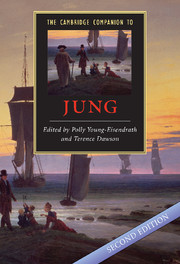Book contents
- Frontmatter
- New developments in the post-Jungian field
- Part I Jung’s Ideas and their Context
- 1 The historical context of analytical psychology
- 2 Freud, Jung, and psychoanalysis
- 3 The creative psyche: Jung’s major contributions
- 4 Psychic imaging: a bridge between subject and object
- Part II Analytical Psychology in Practice
- Part III Analytical Psychology in Society
- Index
1 - The historical context of analytical psychology
from Part I - Jung’s Ideas and their Context
Published online by Cambridge University Press: 28 June 2008
- Frontmatter
- New developments in the post-Jungian field
- Part I Jung’s Ideas and their Context
- 1 The historical context of analytical psychology
- 2 Freud, Jung, and psychoanalysis
- 3 The creative psyche: Jung’s major contributions
- 4 Psychic imaging: a bridge between subject and object
- Part II Analytical Psychology in Practice
- Part III Analytical Psychology in Society
- Index
Summary
Considered by many (e.g. Ellenberger, 1970; Bair, 2003; Papadopoulos, 2006) the most original, broadly educated, and philosophical of the depth psychologists, Jung inhabited a specific era whose scientific thought and popular culture formed the bedrock out of which analytical psychology developed. Analytical psychology has undergone a veritable renaissance of scholarship within the past ten years which cements Jung's key position as a major figure in psychology and the history of ideas. Henri Ellenberger's (1970) study of Jung remains pivotal as the most comprehensive about Jung's life and theory but also about the rise of psychology and psychotherapy in general. Among the growing number of recent scholars, J. J. Clarke (1992) and B. Ulanov (1992) track the pivotal place Jung's ideas occupied in the philosophical discourse of his time; W. L. Kelly (1991) considers Jung one of the four major contributors to contemporary knowledge of the unconscious; Moacanin (1986), Aziz (1990), Spiegelman (1985, 1987, 1991), and Clarke (1994) explore his relation to Eastern psychology and religious thought, while Hoeller (1989), May (1991), Segal (1992), and Charet (1993) trace his gnostic, alchemical, and European mystical roots. Sonu Shamdasani (2003) makes excellent use of much archival material that adds key scientific, sociocultural, and philosophical material to Ellenberger's classic work, while Deirdre Bair (2003) does the same for Jung's life story. This chapter owes much to their scholarship.
- Type
- Chapter
- Information
- The Cambridge Companion to Jung , pp. 19 - 38Publisher: Cambridge University PressPrint publication year: 2008
- 2
- Cited by

